
Sea slug name for a marine gastropod mollusk that lacks a shell as an adult and is usually brightly colored. Australia's Sea slugs, or nudibranchs, are distributed throughout the world, with the greatest numbers and the largest kinds found in tropical waters. They creep along the bottom or cling to submerged vegetation, usually in water just below the low tide line. Members of a few species swim on the surface in open ocean. Most sea slugs are under 1 in. (2.5 cm) long, although the largest, found in the Great Barrier Reef of Australia, reaches 12 in. (30 cm). Regarded by many people as the most beautiful of marine animals, sea slugs display a great array of solid colors and patterns. Many have feathery structures (ceratia) on the back, often in a contrasting color. Australia sea slugs have two pairs of tentacles on the head, used for tactile and chemosensory reception, with a small eye at the base of each tentacle. Sea slugs graze on small sessile animals such as coelenterates, sponges, and bryozoans. Certain sea slugs that feed on corals and sea anemones ingest the stinging cells of their prey without discharging them; these then pass from the slug's digestive tract to the ceratia, where they are used by the slug for its own defense. Sea slugs are classified in the phylum Mollusca , class Gastropoda, subclass Opisthobranchia, order Nudibranchiata.

Shaped like a leaf itself, the slug Elysia chlorotica already has a reputation for kidnapping the photosynthesizing organelles and some genes from algae. Now it turns out that the slug has acquired enough stolen goods to make an entire plant chemical-making pathway work inside an animal body, says Sidney K. Pierce of the University of South Florida in Tampa.
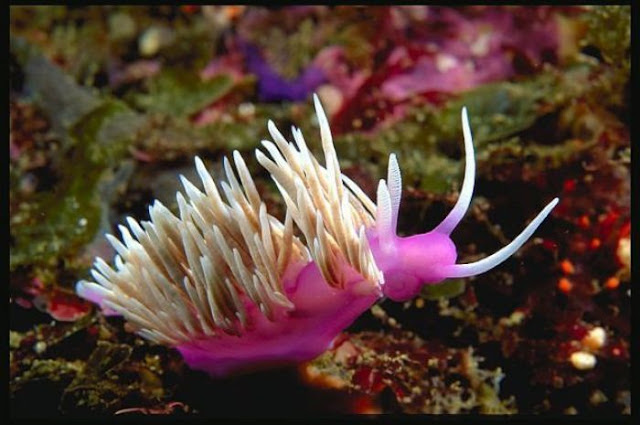
The slugs can manufacture the most common form of chlorophyll, the green pigment in plants that captures energy from sunlight, Pierce reported January 7 at the annual meeting of the Society for Integrative and Comparative Biology. Pierce used a radioactive tracer to show that the slugs were making the pigment, called chlorophyll a, themselves and not simply relying on chlorophyll reserves stolen from the algae the slugs dine on.
“This could be a fusion of a plant and an animal — that’s just cool,” said invertebrate zoologist John Zardus of The Citadel in Charleston, S.C.
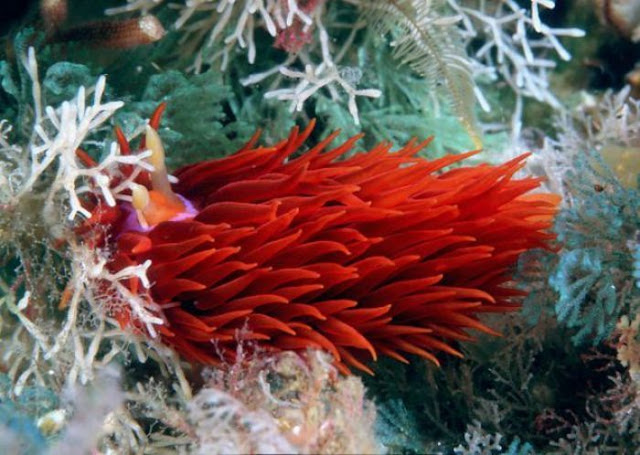
Microbes swap genes readily, but Zardus said he couldn’t think of another natural example of genes flowing between multicellular kingdoms.
Pierce emphasized that this green slug goes far beyond animals such as corals that host live-in microbes that share the bounties of their photosynthesis. Most of those hosts tuck in the partner cells whole in crevices or pockets among host cells. Pierce’s slug, however, takes just parts of cells, the little green photosynthetic organelles called chloroplasts, from the algae it eats. The slug’s highly branched gut network engulfs these stolen bits and holds them inside slug cells.

Some related slugs also engulf chloroplasts but E. chlorotica alone preserves the organelles in working order for a whole slug lifetime of nearly a year. The slug readily sucks the innards out of algal filaments whenever they’re available, but in good light, multiple meals aren’t essential. Scientists have shown that once a young slug has slurped its first chloroplast meal from one of its few favored species of Vaucheria algae, the slug does not have to eat again for the rest of its life. All it has to do is sunbathe.

But the chloroplasts need a continuous supply of chlorophyll and other compounds that get used up during photosynthesis. Back in their native algal cells, chloroplasts depended on algal cell nuclei for the fresh supplies. To function so long in exile, “chloroplasts might have taken a go-cup with them when they left the algae,” Pierce said.

There have been previous hints, however, that the chloroplasts in the slug don’t run on stored-up supplies alone. Starting in 2007, Pierce and his colleagues, as well as another team, found several photosynthesis-related genes in the slugs apparently lifted directly from the algae. Even unhatched sea slugs, which have never encountered algae, carry “algal” photosynthetic genes.

At the meeting, Pierce described finding more borrowed algal genes in the slug genome for enzymes in a chlorophyll-synthesizing pathway. Assembling the whole compound requires some 16 enzymes and the cooperation of multiple cell components. To see whether the slug could actually make new chlorophyll a to resupply the chloroplasts, Pierce and his colleagues turned to slugs that hadn’t fed for at least five months and had stopped releasing any digestive waste. The slugs still contained chloroplasts stripped from the algae, but any other part of the hairy algal mats should have been long digested, he said.
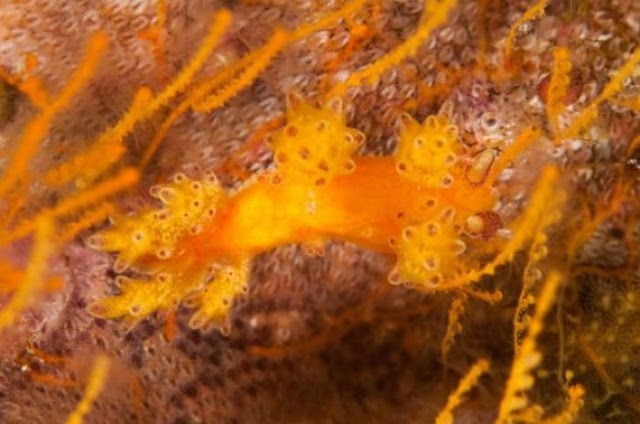
After giving the slugs an amino acid labeled with radioactive carbon, Pierce and his colleagues identified a radioactive product as chlorophyll a. The radioactively tagged compound appeared after a session of slug sunbathing but not after letting slugs sit in the dark. A paper with details of the work is scheduled to appear in the journal Symbiosis.

Zardus, who says that he tries to maintain healthy skepticism as a matter of principle, would like to hear more about how the team controlled for algal contamination. The possibilities for the borrowed photosynthesis are intriguing though, he says. Mixing the genomes of algae and animals could certainly complicate tracing out evolutionary history. In the tree of life, he said, the green sea slug “raises the possibility of branch tips touching.”

“Bizarre,” said Gary Martin, a crustacean biologist at Occidental College in Los Angeles. “Steps in evolution can be more creative than I ever imagined.”













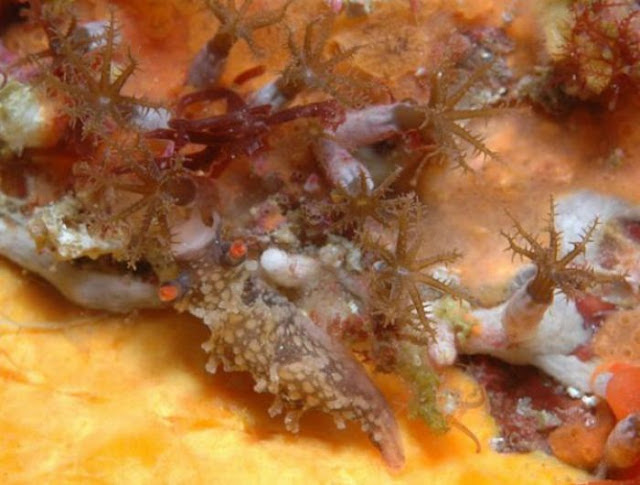



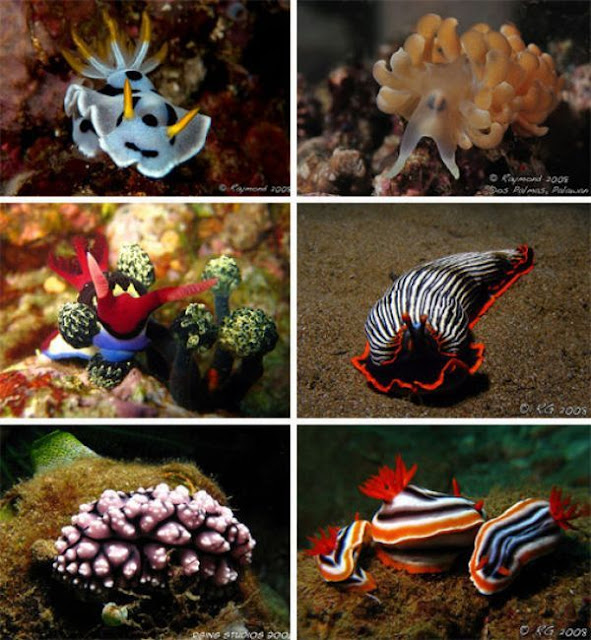


A sea generally refers to a large body of salt water, but the term is used in other contexts as well. Most commonly, the term refers to a large expanse of saline water connected with an ocean, and is commonly used as a synonym for ocean. It is also used sometimes to describe a large saline lake that lacks a natural outlet, such as the Caspian Sea.
Tags:
















0 comments:
Post a Comment
Did you like this page? If so , you have several options to see her again. The first is press Control D to add to your favorites. The second is subscribe by email to receive our updates. The third is add our RSS FEED the reader of your choice. The fourth, follow us on Twitter. The fifth option is to enter our interactive network through Google Buzz. And the most recent option is to join the official site our community on Facebook real -time for our images free of charge.